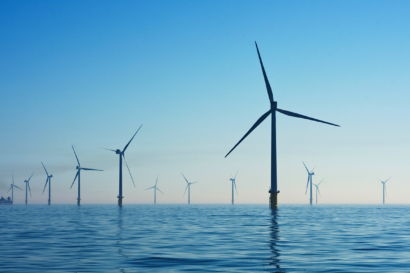AG INSIGHT | 10/10/2018
The IPCC report: an insurmountable challenge or a global opportunity?

Achieving net zero emissions by 2050, as set out by the IPCC report, will require very challenging emission cuts across all economic sectors but recent progress provides a strong basis from which more ambitious action can be taken argues Nick Molho, Executive Director of the Aldersgate Group.
The Paris Agreement agreed in December 2015 commits world leaders to keeping the average rise in global temperatures to “well below 2°C”, while “pursuing efforts to limit the temperature increase to 1.5°C”. As part of the adoption of the Paris Agreement, the Intergovernmental Panel on Climate Change (IPCC) – the body set up by the UN to assess the latest climate science – was asked to write a special report on the impacts and benefits of limiting global warming to 1.5°C, compared to the impacts that can be expected at 2°C of warming.
This report, which involved 91 lead scientific authors from 40 countries, was released on 8th October. In it, climate scientists identify compelling environmental, social and economic benefits to curbing temperature increases to within 1.5°C. They explain for instance that risks linked to extreme weather events such as heatwaves, droughts and flooding, risks to human health and risk to food security are lower – and therefore far more manageable – at 1.5°C of warming than at 2°C. As one of the IPCC authors points out, “every extra bit of warming makes a difference”.
A significant challenge…
The IPCC report says that to have a reasonable chance of limiting temperature rises to 1.5°C, the world economy will need to bring carbon emissions down to zero by mid-century. This means not only accelerating ongoing action to cut emissions in the way we generate power – where decent progress has been made – it also entails making deep cuts in sectors which are more complex to “decarbonise”: buildings, long-distance transport, heavy industry and agriculture. Keeping to 1.5°C will also require absorbing greenhouse gas emissions from the atmosphere, including by investing in natural solutions such as reforestation and restoring the state of peatlands and soils.
…but the world economy isn’t starting from scratch
The challenge is clearly significant, especially given that global emissions increased in 2017 for the first time in four years. However, some important progress has been made in recent years and provides a strong basis for much deeper and faster emission cuts. The world economy cut its carbon intensity (amount of carbon emitted by the unit of GDP) by 2.4% in 2017, whilst installing 160 GW of renewable energy capacity, the largest roll-out of renewables ever made in one year.
Driven by rapid innovation and the fall in the cost of new technologies, the EU and the UK are showing that cutting emissions can happen hand in hand with economic growth. The EU cut its emissions by 23% since 1990, whilst growing its economy by 53%. The UK has done even better and cut its emissions by 43% since 1990 (the fastest of all G7 nations), whilst growing its economy by 70% over that period (above the G7 average). The UK’s low-carbon economy is growing, with some 430,000 employed in the sector, and its businesses now have major strengths in areas such as offshore wind, electric vehicles, energy efficient building design and green financial and legal services.
Despite its still heavy reliance on coal, the Chinese economy cut its carbon intensity by 41% in the last decade according to PWC. In 2017, according to Bloomberg New Energy Finance, China invested $138bn in renewables, a record for any country and a 22% increase on the previous year. Even unhelpful federal politics in Washington haven’t stopped US clean energy investment growing in 2017 and again, in the first half of 2018.
Time for an ambitious plan of action
Taking on the challenge set by IPCC scientists will essentially require that these positive trends be significantly accelerated whilst the use of fossil fuels is heavily reduced. This requires clear policy direction, starting with global leaders increasing their emission reduction pledges under the Paris Agreement.
In the case of the UK, which recently announced its commitment to join the global Carbon Neutral Coalition, the government needs to begin work to legislate for a net zero emissions target. In practice, this means rapidly acting on its commitment to seek the Committee on Climate Change’s independent advice on how the UK can ensure its climate targets are aligned with the 1.5°C goal.
To have credibility, such a goal would need to be backed by detailed policies under the UK’s Clean Growth Strategy to accelerate business investment in ultra-low emission goods, services and infrastructure. Importantly, this should include targeted innovation and financial support for sectors where deep emission cuts will be more challenging to achieve such as in agriculture, long-distance transport and heavy industry.
It’s time to deliver
Global progress to slow down and cut emissions isn’t happening fast enough and a step change is needed to minimise our vulnerability to climate change. With clear political will and a detailed plan of action, the world economy could take on the IPCC’s challenge of keeping temperature increases to within 1.5°C. Doing so could unlock significant innovation, investment and export opportunities for businesses globally, with the UK particularly well placed. As governments around the world consider the investment challenge ahead of them, they should also remember this central message from the IPCC: failure to act at the necessary pace and scale also comes with economic consequences.
Nick Molho is Executive Director at the Aldersgate Group



